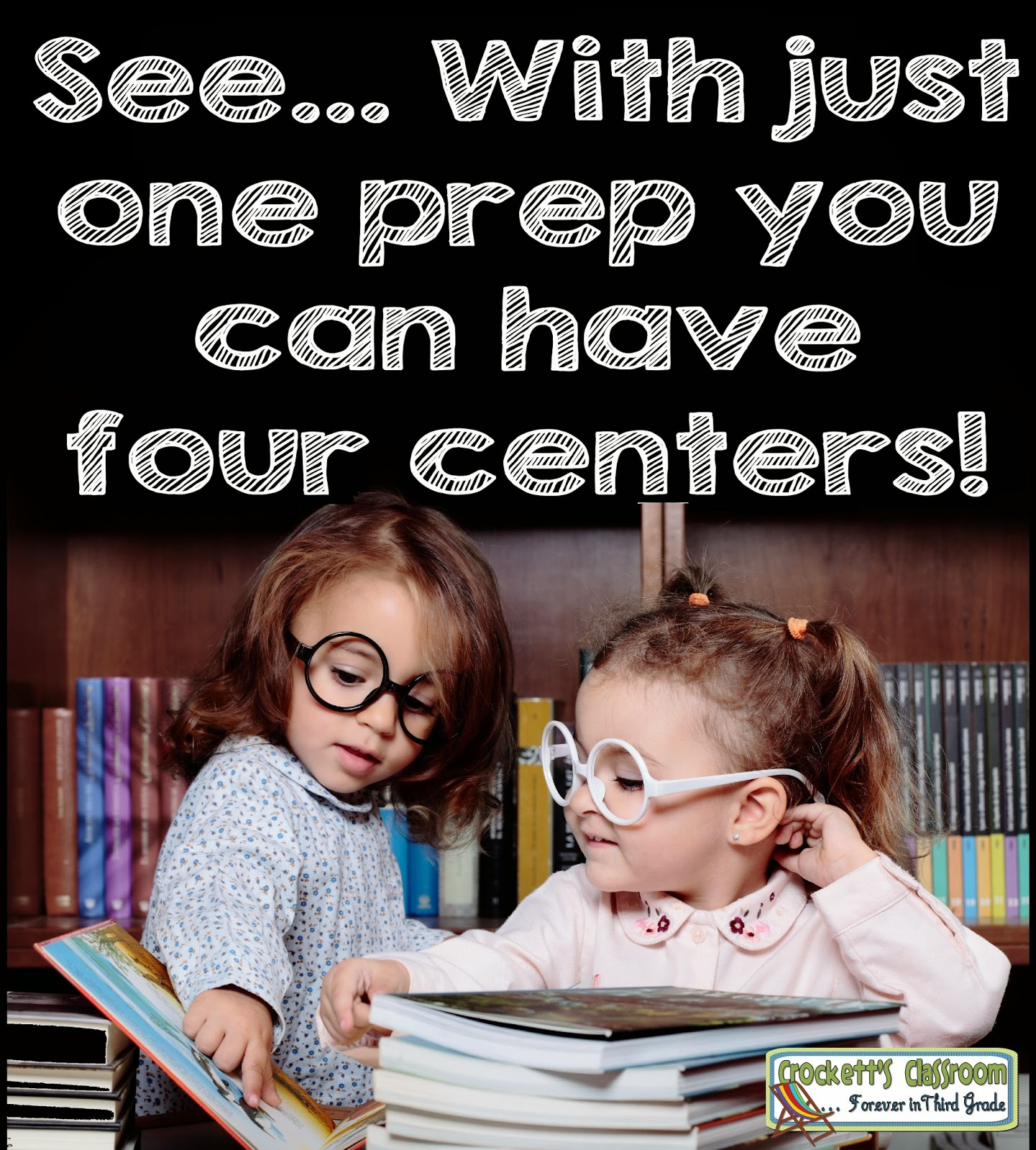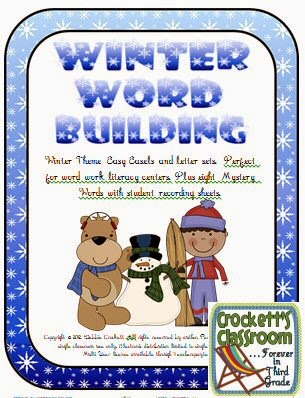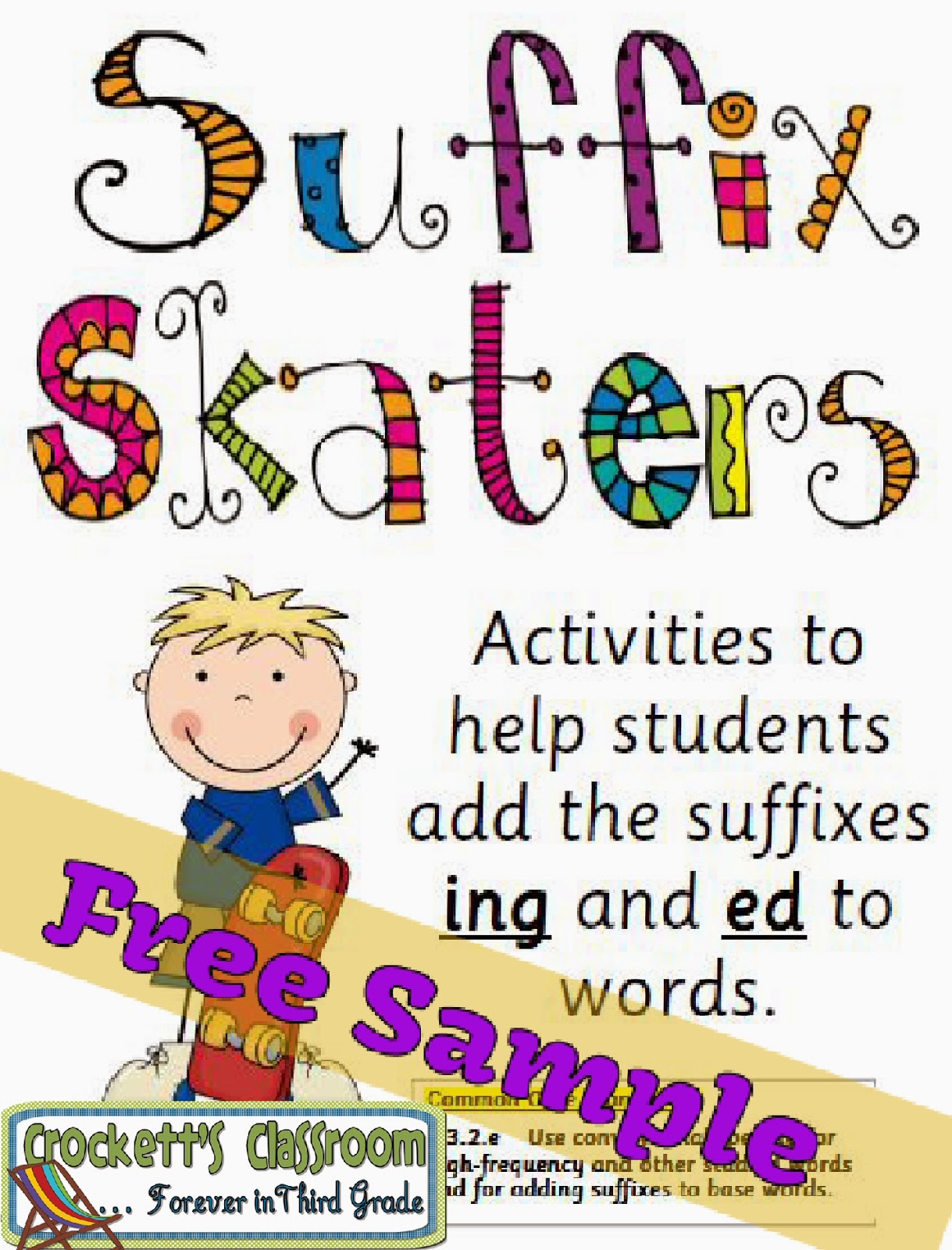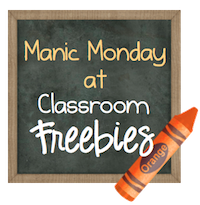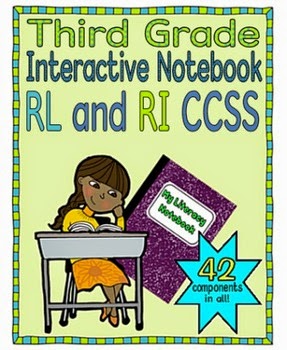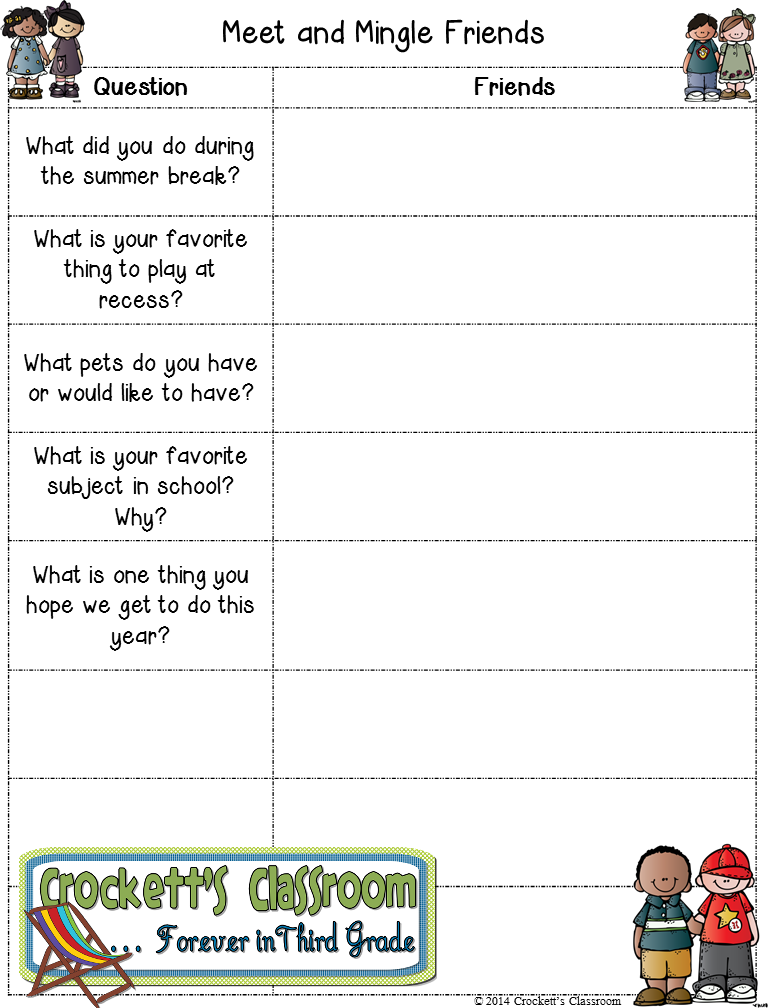The letters cards can be made by you, or from a purchased set. For three of these activities you can also use letter tiles. I like the letter tiles from the game Banana Grams, but other letter tiles will work.
The letter cards I've used in these examples are from my Winter Word Building set.

For the first week, students can use letters you've selected to build words. The letters you choose should spell one long word. That word can be seasonal or go along with one of your current topics of study. My example uses the letters a, e, f, k, l, n, o, s and w. With these letters the students can make lots of 2, 3, 4, 5 and 6 letter words. The final challenge is to see if they can figure out the mystery word made using all the letters. Click here for a free recording sheet.
For the second-week students are challenged with a word ladder. The idea is simple, but it can be quite a challenge to make it all the way to the top.
Students (or teacher) chooses a two or three letter word to write on the lowest step of the ladder. Then they can change only one thing about the word to make a new word to move up to the next step. They can add a letter, remove a letter, or exchange a letter. It's also allowed to rearrange the letters to form a new word. The words going up the ladder might look like this:
sit-sat-fat-at-bat-bit-bite-kite-tie-time-tame-same-came-come.
sit-sat-fat-at-bat-bit-bite-kite-tie-time-tame-same-came-come.
Younger students will need to use letter cards or tiles to move around as they form the words and write them on the recording sheet. Click here to download the Word Ladder Recording sheet.
Update: Google Slides version of Word Ladder added on Aug. 7, 2020!
During week three students get to practice their spelling skills.
Guess My Word is a little like hangman, only it can be played with multiple players.
For Week Four students play a card game called "Do you have. . .? Using letter cards students try to build words. The first student to use the agreed upon number of letters in their words is the winner. Click here to download more detailed directions.
The great thing about this game is students get to choose what words they spell. Students who can only spell 2 or 3 letter words can play with students who easily spell 4 or 5 letter words.
I hope your students enjoy these word and spelling games!
During week three students get to practice their spelling skills.
Guess My Word is a little like hangman, only it can be played with multiple players.
Each
player needs a word mat and a set of letters. (extra vowel are provided)
Players
place their word mat in front of themselves with the Make
My Word side facing them. The other players will see the other side
that says, Guess
My Word.
Each
player thinks of a word. The word can have 2, 3, 4, 5, or 6
letters. The players lay the letters for the word, face
down in front of them, on the side of their mat that says Make
My Word.
Once
everyone has their word ready, they take turns guessing a letter
for an opponent's word. The guess needs to be to a specific person for a specific letter. (Rachel, do you
have a b?) If the player has that letter he/
she turns it over and places it on the side that says Guess
My Word so all players can see it. A turn
continues until the player receives a "no" for a guessed letter.
When a letter is turned over it needs to be placed, face-up on the Guess My Word side. The letters should go in correct word order so someone looking from the other side sees the beginning letter in box 1. The numbers on the mat help players know where to put the turned over letters.
Example: It's Kelly's turn: "Joey, do you have an a?" If Joey has an a in his word he turns it over and Kelly gets to ask again. She can ask Joey again, or another player. When Kelly receives a no, her turn is over. If Kelly thinks she knows one of the words she needs to guess each letter one at a time. She does not say, "Is your word deal?“
When a letter is turned over it needs to be placed, face-up on the Guess My Word side. The letters should go in correct word order so someone looking from the other side sees the beginning letter in box 1. The numbers on the mat help players know where to put the turned over letters.
Example: It's Kelly's turn: "Joey, do you have an a?" If Joey has an a in his word he turns it over and Kelly gets to ask again. She can ask Joey again, or another player. When Kelly receives a no, her turn is over. If Kelly thinks she knows one of the words she needs to guess each letter one at a time. She does not say, "Is your word deal?“
Once
all the letters in a player’s word have been revealed, that player gets to keep
guessing the letters for the other words.
For Week Four students play a card game called "Do you have. . .? Using letter cards students try to build words. The first student to use the agreed upon number of letters in their words is the winner. Click here to download more detailed directions.
The great thing about this game is students get to choose what words they spell. Students who can only spell 2 or 3 letter words can play with students who easily spell 4 or 5 letter words.
I hope your students enjoy these word and spelling games!

